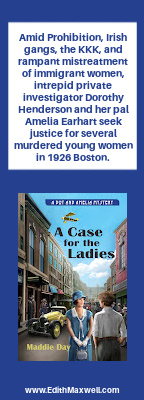by Diana Hockley
‘Er…I’m a mouse judge.’
This is the typical start of a conversation with non-rodent admirers, who gaze at me like I am about to bare my teeth and gibber. The “what” is most pronounced when I am talking to farm people; for some reason, they are not rodent lovers. A series of mouse plagues over many years in western Queensland and New South Wales may have something to do with that!
Having owned and operated a mouse circus for many years – (now under mouse circus Australia on You Tube) – the time had come to retire so we put the circus up for sale and sold or gave away the mice. I had been taken over by pet rats for many years and belonged to the Queensland Fancy Rat & Mouse Club.
Around eighteen months ago, the regular judge went overseas, and as I had been stewarding for the judge, I was invited to be the new judge. Moi? Oh, okay.
So, how do you judge a mouse? The explanation, given to a glazed-eyed enquirer, is simple: the same as any other animal – cattle, sheep, horses, donkeys, dogs, cats – the best of the bunch need to conform to sets of standards for their breed.
There are four breeds of mice: Shorthair, Rex, Manx and Longhair. These breeds come in varieties of colors. In my ten years of owning the circus, we had all the breeds in every variety – Siamese, blue, fawn, black, chocolate, cream with pink eyes, cream with black eyes, white with pink eyes and black eyes, rex and Texel. We had broken, tiger, tortoiseshell, banded, sable, champagne – the list goes on.
The varieties can be a complex set of combinations. For example, white mice that have black eyes (think Stuart Little) are not white mice! They are in fact, albino black and white mice. Tiger mice come in all colors. Cream with brown stripes (snow tigers) blue with fawn (auburn) stripes, fawn with black stripes, black with fawn stripes. Tortoiseshell are like cats, a variety of black, white and usually fawn/orange all mashed up together. The banded could be any color but often black or chocolate, with a white band around their stomach. Litters of these look like tiny bees!
As in all judging, from Miss World down to mice, the judge is required to look firstly for good health, which means bright eyes, shiny coat, big un-bitten ears, a perfect tail with no kinks or bites, and long whiskers. Mice under six weeks of age and obviously pregnant mice are disqualified if they turn up on the judge’s bench.
As with any animal breeds, the contestants have to conform to the class in which they are entered. For example, self class means that the mouse can be any color, but with no white on its body. It’s very hard to find a mouse whose color goes right to the tips of its paws and the tip of its tail. Most black mice have a tiny white tip on their tail and at the very end of their little fingers. Many have a tiny white dot under their chins or right in the centre of their tummies. This is enough to relegate them to the pet class.
There are variations on the breed coats. For example, a Rex mouse should have a tightly curled coat, with curled whiskers, but a Texel would have a long curly coat and not as tightly furled whiskers. The color however, does not matter, nor does the pattern.
All mice should be trim, taut and terrific – with the exception of Manx and fawn. Manx, as their name suggests, have no tail. Not only do they have no tail, but where their tailbone would normally be, there should be a hollow. Their bodies are plump and square, like the koalas they resemble when you let them cling to your finger! They should also have a very placid temperament.
Fawn mice have a peculiarity which is unique. Many years ago – around 40-50, no one can say for sure – laboratories were doing obesity trials, and of course as is always the case, rodents were the sacrificial lambs. Now all these years along, the descendants of the survivors are in fact, obese! Even though they may have inter-bred with other mice and are black or white, they are instantly recognizable by their portly figures. I had several in the circus and they thrived on spinning in the wheels and climbing ladders. Audiences were always asking if they were pregnant! One girl I had weighed 100 grams. I tried many times to put these mice on diets but they got so stressed that I gave up.
The morning of the show, I arrive around 9 a.m. Our club hires a hall in a close outer suburb of Brisbane, and by the time I complete my hour and fifteen minutes drive, the first arrivals have dragged out the tables and chairs and set them up. The mouse and rat judging tables are always in front of the stage, side by side, with the speaker system between us. The folder with my forms, standards book and packet of certificates arrive with the committee. I am issued with baby wipes (for any rodent poops) and tissues.
The hall will be filled with tables lined up along the walls. If we have a big crowd, there will be tables placed across the center of the room. The vendors – Dapper Rat and Ratly Manor, who sell all things rat and mouse – food, hammocks, calendars, cards, and the Rat Health Care book – are down one wall near the kitchen. Some of us bring cake and other goodies to be sold on behalf of the club. A table with donated raffle prizes is set up by the judges table. Anything for sale such as cages or equipment is placed on the stage.
As soon as the entrants arrive, the judges book the animals into the classes, which cost $1 each for members, $2 for visiting exhibitors. The secretary has her table at the door, taking entrance fee ($2) selling newsletters and – hopefully – registering new members. Sometimes we have a meeting of the committee before the start of the show while people are setting up their tables.
The judging begins usually around 10:30 – 11:00 a.m. At this time, because there are not very many mice being shown – about five exhibitors per show – the classes are minimal:
Self, Longhair, Rex, Texel, broken marked (pied) shaded (Siamese) tiger, and the pet classes. The mouse who wins the most points over the day, gets the champion medal. If they all get the same number of points, the judge has to make a call on it.
Each contestant arrives in a small clear plastic box with a coloured lid. Because we don’t have enormous numbers of mice and rats in a show as they do in the UK, the judging is not as formal. I know who the owners are because it is they who bring their entries to the table. But I swear I am ruthless!!! I will stay away from the exhibitors while they are setting up and if anyone wants to know what class their mouse should be in, I ask another member to talk to them. I will sometimes keep owners after they come to collect their mice and explain why this or that mouse was judged best.
If there is a problem with a mouse (obvious stress or illness) I will call the owner up to the table and ask them to take their animal out of the contest. If a mouse is in the wrong class for its type, I will call the owner up and explain why it needs to go into another class and then we will talk about changing it.
In the UK, this does not happen. The UK is the only place I know other than here, and I attended only rat shows. The rats arrive and are placed in medium-sized clear containers, all with identical mesh lids. The animal’s show number is stuck on the side of the container and then underneath, the numbers of all the classes the animal is entered into. Each rat has a piece of food, frequently cucumber I was surprised to see, but certainly something juicy, and litter in the bottom of the container.
The rats are placed on a U-shaped set of tables and the judges don’t arrive until all the animals have been vet-checked and benched. The rats stay in their containers on the table for the whole time of judging. This frequently takes all day. Those who are finished with their class, the containers are placed on the floor under the tables. The owners do not go near them (unless one becomes sick) and the judges have no idea which rat belongs to which owner. Their pet classes are, however, more relaxed!
Our show usually finishes around 2 p.m. or sometimes earlier. The judges announce the winners and the president of the club hands out the medals. The raffles are drawn and then we all rush around cleaning up and putting the tables and chairs away until the next show, three months down the track.
And yes, I really enjoy judging mice!


















Wow! I have a new respect for mice. These little rodents are as cute as can be. The pictures are pefect and offer a whole new picture of these little critters.
Being familiar with Diana’s work, I have to say, this article that she has written about being a mouse judge is informative, funny and a pleasure to read. I almost (ALMOST) ran out to buy a mouse.
Irene Hamilton from Alberta, Canada